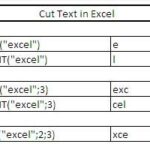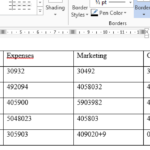Creating an S-Curve in Excel
An S-curve, also known as an S-shaped curve or sigmoid curve, is a graphical representation of data that exhibits a characteristic “S” shape. It is commonly used in project management, sales forecasting, and various other fields to visualize the growth or progression of data over time.
In this article, we’ll explore the steps to create an S-curve in Excel.
Data Preparation
Before you can create an S-curve in Excel, you need to prepare your data. Typically, S-curves represent cumulative data over time. Here’s an example:
| Time Period | Cumulative Data |
|---|---|
| 1 | 10 |
| 2 | 20 |
| 3 | 40 |
| 4 | 70 |
| 5 | 110 |
Create a Scatter Plot
Next, you’ll need to create a scatter plot in Excel:
- Select your data (both time periods and cumulative data).
- Go to the “Insert” tab and choose “Scatter” from the chart group. Select the scatter plot with smooth lines and markers.
- Your scatter plot will appear in the Excel worksheet.
Format the Scatter Plot
To make the scatter plot resemble an S-curve:
- Right-click on the horizontal axis (time axis) and format it to start from zero and end at the maximum time period in your data.
- Right-click on the vertical axis (cumulative data axis) and format it as needed based on your data’s range.
- Format the data points, lines, and markers to your preference. You can change colors, line styles, and markers to enhance the appearance of your S-curve.
Add Labels and Titles
Make your S-curve easier to understand by adding labels and titles:
- Add axis labels and titles by selecting the chart, then going to the “Chart Elements” button (the plus icon) and choosing the desired elements to add.
- Label the horizontal axis as “Time Period” and the vertical axis as “Cumulative Data”.
- Add a title to your chart, such as “S-Curve Representation”.
Smoothing Options
When creating an S-curve, Excel’s default settings for smooth lines and markers are usually sufficient. However, you can further customize the smoothness of the curve by right-clicking on the data series, selecting “Format Data Series”, and adjusting the “Smoothness” slider.
Data Validation
Ensure that your data is accurate and complete before creating an S-curve. Any missing or incorrect data points can distort the curve and affect the accuracy of your analysis.
Forecasting
S-curves are often used for forecasting future trends based on historical data. You can extend your S-curve by adding projected data points beyond your existing data range to visualize future expectations.
Multiple Curves
In some cases, you may want to create multiple S-curves on the same chart to compare different scenarios or data sets. You can do this by adding additional data series to your chart.




op from canada
I created my own using your manual, thanks